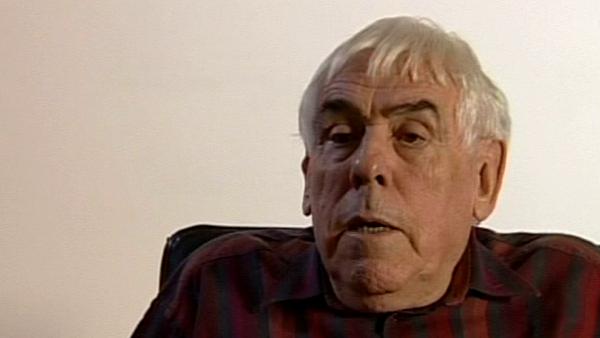NEXT STORY

The team of The Devil's Pass
RELATED STORIES

NEXT STORY

The team of The Devil's Pass
RELATED STORIES


|
Views | Duration | |
|---|---|---|---|
| 31. From photography to cinema | 142 | 01:50 | |
| 32. The team of The Devil's Pass | 96 | 01:49 | |
| 33. Filming The Devil's Pass | 93 | 03:00 | |
| 34. Problems during filming The Devil's Pass | 89 | 02:22 | |
| 35. The royal Bouzkachi | 67 | 04:04 | |
| 36. The Samarkand meeting | 86 | 02:40 | |
| 37. The filming conditions of The Devil's Pass | 62 | 02:00 | |
| 38. Leaving Afghanistan | 50 | 02:15 | |
| 39. Stopping in Moscow | 52 | 03:56 | |
| 40. Returning to Paris | 55 | 02:20 |


Alors donc là, j'ai dit oui parce que je pensais pouvoir me débrouiller. Et alors heureusement finalement ce film n'était pas compliqué à faire parce que c'était un film qui était fait en extérieur, donc il n'y avait pratiquement pas d'éclairage à faire, il n'y en avait pas même d'ailleurs. Bon alors c'est vrai que ce qui était compliqué il était en scope et en couleur. Bon alors le plus ennuyeux c'était le problème du scope, la couleur c'était pas un truc qui m'effrayait dans la mesure où j'avais déjà fait pas mal de photos en couleur. Ce qui était assez rare à l'époque. D'ailleurs assez rare pour des raisons simples.
C'est qu'à l'époque quand on voulait imprimer, les imprimeurs ne voulaient pas les photos en 24x36, parce qu'ils trouvaient que c'était trop petit, alors il fallait leur donner au moins des 6x6, si c'était pas des 9x12, c'était un truc que je faisais pas. Parce que même dans l'Indochine Sud Est c'était très compliqué de passer mes photos couleur. Bon donc j'ai accepté et je me disais... Je vais me débrouiller parce que ça ne paraissait pas être d'une complication extraordinaire de passer de la photographie à la cinématographie. Les problèmes d'exposition sont les mêmes, les problèmes de pellicule restaient sensiblement les mêmes. Bon en ce qui concernait les cadrages c'est pas le problème, je veux dire bien que le format soit un peu plus carré au cinéma. Bon là c'était un peu plus compliqué parce qu'on était en scope, donc c'était un format un peu plus bizarre. Bon. Mais enfin c'était pas un truc qui m'effrayait. Par contre quand je suis arrivé ce qui m'a le plus effrayé c'est le personnel du cinéma, je veux dire parce que d'un seul coup se retrouver avec des gens qui étaient... On se frictionnait à l'hostilité là, d'un seul coup. Les gens n'étaient pas prêts à vous aider du tout, ils étaient même plutôt enclins à ce que vous vous cassiez la gueule.
And so then I said 'yes' because I thought I could manage it. And so fortunately, the film wasn't hard to make, in the end, because it was shot on location, so there was practically no lighting to be done, actually there wasn't any. So it's true that what was difficult was that it was in scope and in colour. So then the most difficult was the scope problem, colour wasn't something I was scared of, inasmuch as I had done quite a few colour photos. Which was quite unusual at the time. So unusual, in fact, for simple reasons.
At the time when we wanted to print, printers didn't want the photos in 24x36, because they thought it was too small, so we had to give them in 6x6, if not in 9x12, which was something I didn't do. Because even in South East Indochina, it was very difficult to print my colour photos. So... well, I accepted and thought I'll manage because it didn't seem to be extraordinarily complicated to go from photography to cinematography. The exposure problems are the same; the film problems stayed sensibly the same. So in regards to framing, that's not the problem, I mean that the size is a little more squared in cinema. So then it was a little more complicated because we were in scope, so it was a slightly stranger size. But... well, it wasn't something that frightened me. On the other hand, when I got there what frightened me the most was the cinema personnel, I mean because suddenly being with people who were... all of a sudden we were faced with hostility. People weren't ready to help you at all; they were actually more interested in watching us fall flat on our faces.
French cinematographer, Raoul Coutard (1924-2016) was twice nominated for the César Award for best cinematography which he won in 1978 for 'Le Crabe-tambour'. He made over 75 films and documentaries, including 'À Bout de Souffle', Le Mépris' and 'Band à Part'. He was the most acclaimed French cinematographer of his generation and one of the key figures of the New Wave.
Title: From photography to cinema
Listeners: Bernard Cohn
Bernard Cohn est un réalisateur et écrivain français, ayant réalisé cinq film ainsi que de nombreux reportages et séries télévisées. En tant qu'assistant réalisateur, il a travaillé avec plusieurs grands cinéastes, notamment Luis Buñuel, François Truffaut, Otto Preminger et Woody Allen. Il fut membre fondateur du ciné-club Ciné-Qua-Non et a participé à la rédaction et traduction en anglais, de plusieurs ouvrages sur le cinéma.
Benard Cohn is a French filmmaker and writer, who has directed five films as well as numerous documentaries and television series. As an assistant director, he worked with many important filmmakers, including Luis Buñuel, François Jacob, Otto Preminger and Woody Allen. He was a founding member of the Ciné-Qua-Non cinema club and has acted as editor and translator for various publications on the world of cinema.
Tags: photography, cinema, print
Duration: 1 minute, 51 seconds
Date story recorded: October 2004
Date story went live: 24 January 2008